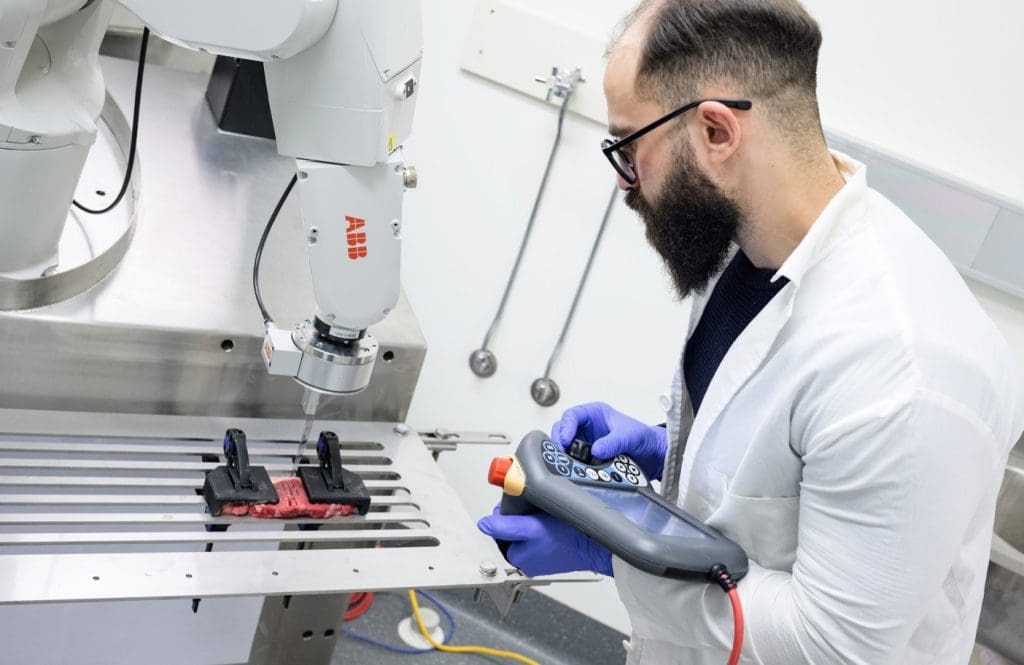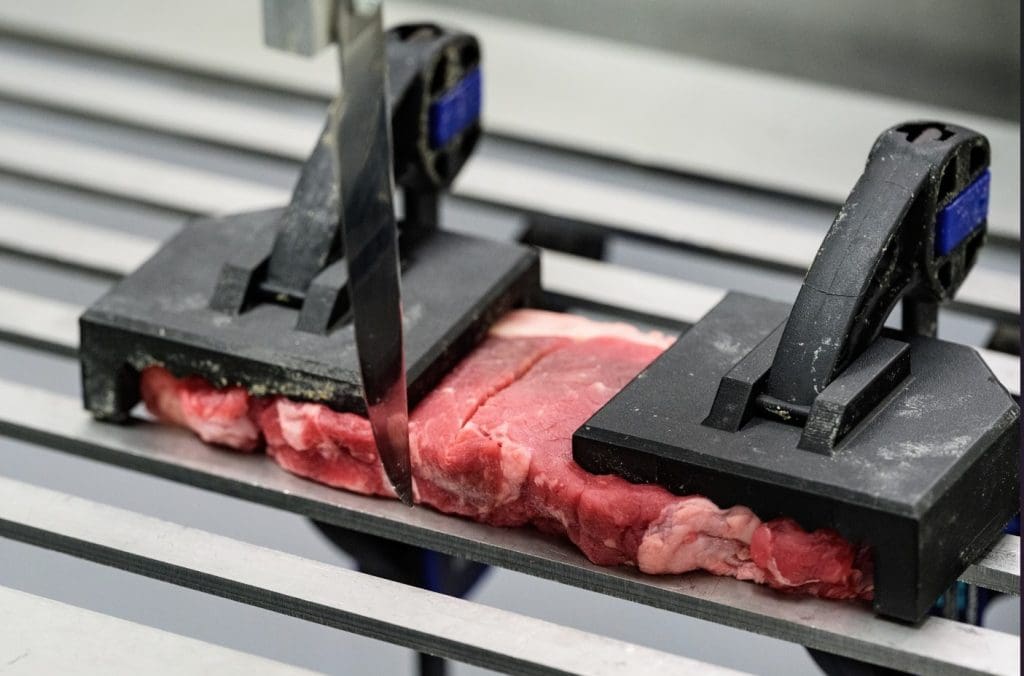
RESEARCHERS at the University of Southern Queensland are advancing the development of automated meat cutting technologies, teaching robots to ‘feel’ their way around a meat sample the way a boner or slicer does in the workplace.
Research Fellow Dr Basem Adel Aly from the University’s Centre for Agricultural Engineering is leading the research, which involves analysing the data from a controllable robotic arm attached to a blade and force sensor.
Dr Aly – who was recently awarded a Fellowship with the Food and Beverage Accelerator to further this research – said his focus had been using the technology to detect changes in the texture and density of the meat, which allowed the technology to ‘feel’ where it needed to cut.
“Automation needs to either see or feel, so this technology allows us to sense beneath the blind spots of the meat,” Dr Aly said.
“The different tissues in the meat – such as muscle, fat and bone – all feel different, and so it’s similar to what we do as humans while we’re cutting or boning. We feel for that difference and then we translate that into actions based on our experience and knowledge about how we need to cut meat.”
The robot uses a similar concept; it’s basically a manipulator that can imitate the moving arm of a human butcher by measuring the force exerted on the knife and using those different forces to understand where to cut.
The introduction of automation in meat processing in Australia has already led to increases in productivity, quality, and safety within the industry and has helped the industry to compete with international markets, researchers said.
“Developing new automation and robotic cutting technologies could help alleviate the physical workload that often leads to injuries and absenteeism,” Dr Aly said.
“This shift not only supports existing workers by making their jobs safer and more manageable but also makes careers in the industry more attractive by lowering the skill barrier for more intricate tasks.
“Additionally, automation can create new job opportunities related to this technology, thereby supporting workforce development and industry growth. The next few years will likely see a real collaboration between people and robots, or smart assistive tools,” he said.
“One of the main goals of this technology is to make sure the quality of Australian meat stays on top.”

Dr Aly said meat cutting automation was just one application of the technology and that it could potentially be applied across a range of organic materials.
“Robotics and automation are very prominent in rigid-based industries like automotive or metal because those materials are easy to predict; they are not going to compress or deform while you’re handling them,” he said.
“But when it comes to meat and other food and natural products, you cannot predict what’s happening while you are handling them. This technology will enable robots to adapt to those changes.”
Dr Aly said the next step would be an industry partnership to test the technology in an experimental setting and if successful, then commercialise it for industry participation. He hopes to have this technology available to the industry within three years.
“The FaBA Fellowship appointment will significantly enhance my research project by providing the necessary support to transition from experimental and fundamental research conducted over the past three years to practical, industry-relevant applications,” he said.
Source: UniSQ